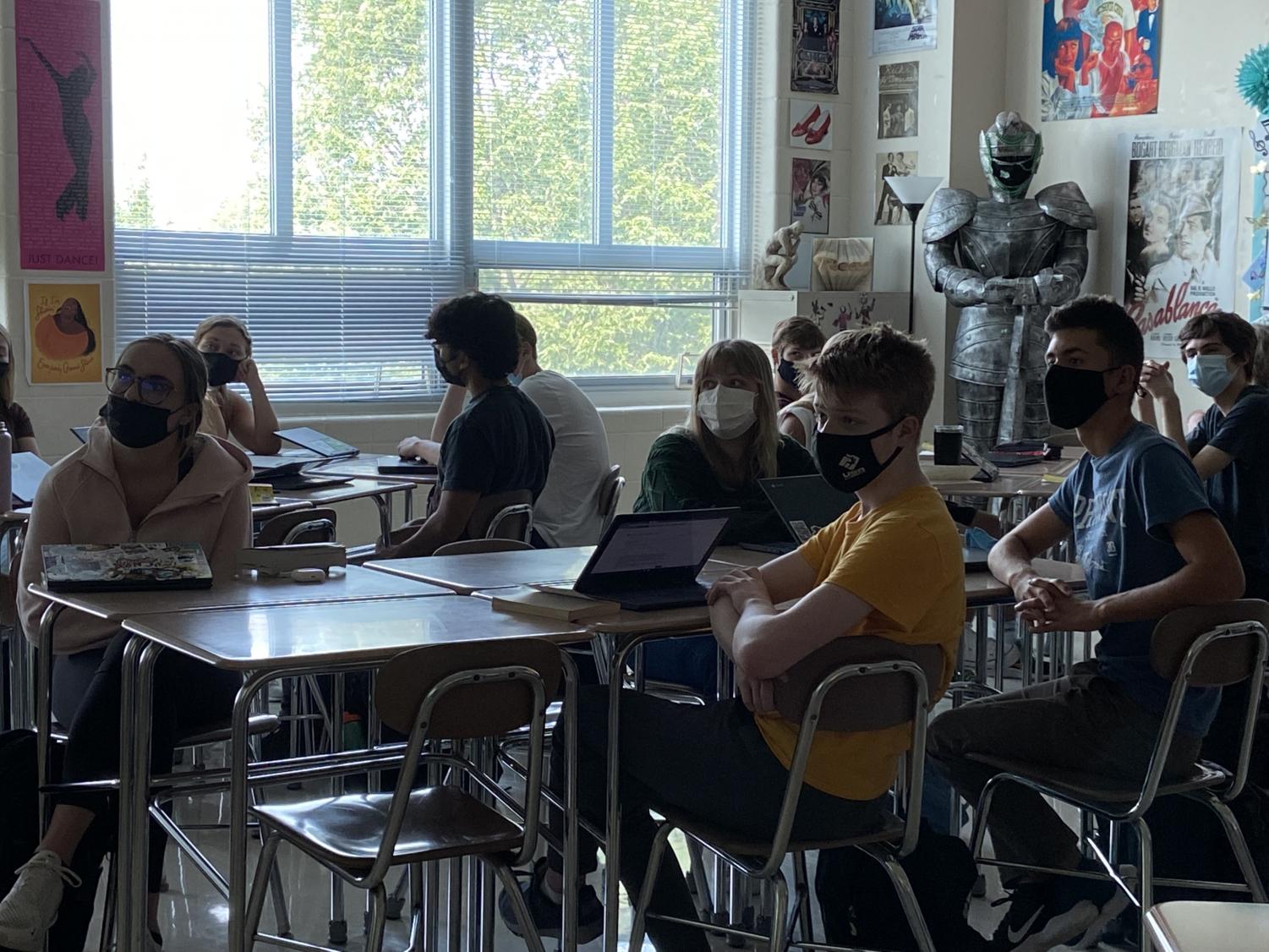It’s Time to Look at an Alternative Schedule
September 10, 2021
At first glance, having each class for only 50 minutes a day sounds ideal. But in reality, it is most certainly not. Our high school has not strayed away from this system for at least two decades, with the exception of last year’s modified online-school schedule. I don’t see why so many people prefer it. Does homework and eight room transitions every day sound like a good time?
From an educational standpoint, I find it difficult to absorb so much information in a single day. After just getting introduced to an idea, the bell rings, and you’re off to your next class. More often than not, the day is like a blur, and it’s tough to say I really went into depth about a subject in class. Of course it’s not the teachers to blame, but the lack of time.
A typical argument promoting the consecutive eight period schedule would suggest that students learn better with shorter class periods. There is no proof to refute this evidence, nor is there for any other class block, so this argument is strictly to the preference of each student. As someone who’s experienced multiple school schedules, I’ve found the eight period schedule to be lacking in many aspects, such as it’s overwhelming effect and constant movement. Therefore my preference lies with an alternate schedule.
I propose to the York Community High School staff, or whomever has the capability to enact change in this school, that a new block schedule be put in place of the existing one.
A traditional “4 X 4” block schedule consists of four classes in total, repeated everyday. This schedule is typically introduced in college, and doesn’t seem especially effective in high school settings. What I am proposing the school administration consider, is the “A/B” or “alternating day” block schedule. This schedule allows students the option to take up to eight classes in a school year, but without having each class everyday. Students take four 90-minute classes that meet every other day, with the addition of one day with all their classes (typically on Wednesday). If a student wants to take seven classes like usual, the remaining class block can be used for a seminar, or study hall.
Why would this be good for both teachers and students?
For teachers, longer time in class gives them more freedom to prepare lesson plans, issue tests, give labs, etc.. With all this extra time, teachers will feel less rushed, resulting in better quality teaching and a more relaxed learning environment. There is less dilly dallying in the beginning of class periods as well. Also, a teacher’s class would only meet three times a week, giving them more time to plan the lessons and adjust accordingly.
Also, teachers will see fewer students each day, so teachers can form stronger bonds with students and instead of offering extra help after school, instructors can help them during class hours. This allows students to have more individualized instruction from their teachers, in turn achieving a better understanding of the content. Not to mention the peer learning that would be going on, far more than it is now (COVID-19 excluded). Teachers will also be able to cover more material in the longer class periods, potentially speeding up the curriculum and course load.
For students, here is the biggest positive factor I can contribute about this schedule: far less homework everyday! Don’t get me wrong, you still have to do your homework, but it would be less overwhelming because you wouldn’t have seven classes giving you homework every night. It’s difficult to be productive in such short, fragmented time periods, but this schedule allows for reflection. Students have less information thrown at them in one day, so they’re able to process the specific bits they’ve learned when they go to bed.
I often jumble up class topics, even taking into account the drastically different subjects, and I can forget what I’ve learned even two days after the fact. This may be specific to me, but nonetheless, it is ironic. I’ve experienced both the block schedule and York’s schedule and I’ve found the block to be much more productive and engaging, despite class times almost being doubled.
Truly, this schedule is better fit to prepare students for college. With greater student collaboration and longer blocks of time, this schedule simulates college classes fairly well. Through my knowledge of movies and hearsay, college is about collaboration and stimulating your brain to its fullest potential. Right now, this schedule makes me feel like I’m always running behind. I want to have time to feel I’m in a boxing ring with Einstein! I want to be pushed to my fullest potential and such short classes really aren’t doing it for me. A block schedule would allow for a stronger student culture, which is especially important in classrooms where the curriculum is particularly challenging. I know I would benefit from that in math, yikes.
Whether you are against a block schedule or not, I don’t think it would hurt to give it a try. What about a trial run? If a kid with an atrocious attention span, such as myself, finds a block schedule preferable to one that is typically better for people with shorter attention spans, maybe it’s worth a look.
Roughly one in every three of the nation’s secondary schools operate with the block schedule, and it’s about time we join the party.

